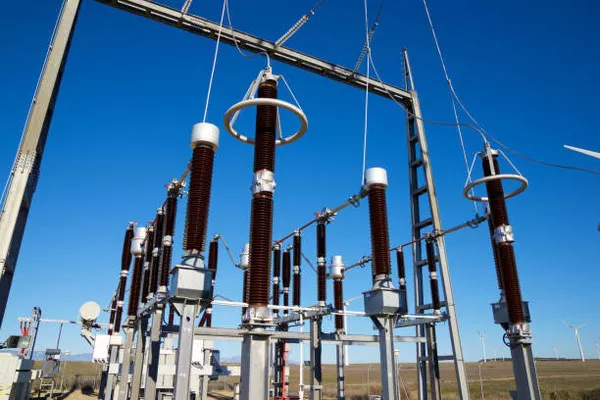Refrigeration is a fundamental aspect of modern life, playing a pivotal role in preserving food, maintaining industrial processes, and ensuring comfort in our homes and offices. Traditionally, compression refrigeration systems have been the go-to technology for cooling and freezing applications. However, as concerns about environmental sustainability and energy efficiency continue to grow, alternative cooling technologies are gaining prominence. Absorption refrigeration is one such technology that offers significant advantages in terms of energy efficiency and environmental impact. In this article, we will explore what absorption refrigeration is, how it works, its applications, and its potential as a sustainable cooling solution.
Understanding Absorption Refrigeration
Absorption refrigeration is a thermally driven cooling technology that relies on the principles of heat absorption and evaporation to produce cooling effects. Unlike conventional compression refrigeration systems that use mechanical compressors to circulate refrigerants, absorption refrigeration systems utilize a different set of components and processes. The key components of an absorption refrigeration system include an absorber, a generator, a heat exchanger, and a condenser.
How Absorption Refrigeration Works
Absorption: The process begins with a low-pressure, low-temperature mixture of a refrigerant (often ammonia, water, or lithium bromide) and an absorbent (typically water). In the absorber, this mixture is exposed to a heat source, typically steam or hot water. The refrigerant vaporizes, absorbing heat in the process. The absorbent then takes in the vaporized refrigerant, creating a dilute solution.
Generation: The dilute solution flows into the generator, where it is heated further. This causes the absorbed refrigerant to be released from the absorbent as a vapor. The high-temperature vapor is collected at the top of the generator, leaving the absorbent behind.
Heat Exchange: The high-temperature vapor is then passed through a heat exchanger, where it releases heat and condenses into a liquid. This heat is usually transferred to a cooling medium, like air or water, and can be reused in the process.
Condensation: The condensed refrigerant is sent to the condenser, where it is cooled and turned into a liquid. This cooling process typically occurs via contact with air or another cooling medium.
Expansion: The high-pressure liquid refrigerant is expanded through a valve or an expansion device, which causes it to rapidly decrease in pressure and temperature, leading to evaporation.
Evaporation: The low-pressure, low-temperature refrigerant enters the evaporator, where it absorbs heat from its surroundings, thereby cooling the space or product it is intended to cool. This completes the cycle, and the refrigerant returns to the absorber to start the process anew.
Applications of Absorption Refrigeration
Absorption refrigeration systems have a wide range of applications, and they are particularly well-suited for scenarios where waste heat is readily available, making them an attractive choice for energy-efficient cooling. Some common applications include:
Industrial Refrigeration: Absorption refrigeration is used in industrial processes that require cooling, such as chemical manufacturing, food processing, and pharmaceutical production.
HVAC Systems: Absorption chillers can be integrated into heating, ventilation, and air conditioning (HVAC) systems for commercial and residential buildings, providing energy-efficient cooling.
Refrigerated Transport: Absorption refrigeration systems are utilized in refrigerated trucks and trailers to transport perishable goods over long distances.
Solar Cooling: The ability to operate on low-grade heat sources makes absorption refrigeration systems ideal for solar cooling applications, where sunlight is used to provide the necessary heat for cooling.
Remote Areas: In off-grid or remote areas with limited access to electricity, absorption refrigeration can provide cooling solutions using alternative energy sources like biomass, natural gas, or waste heat.
Advantages of Absorption Refrigeration
Energy Efficiency: Absorption refrigeration systems are known for their high energy efficiency, especially when coupled with waste heat sources. This can lead to significant energy savings compared to traditional compression systems.
Environmentally Friendly: Absorption refrigeration systems often use environmentally benign refrigerants like water or ammonia, reducing their impact on the ozone layer and global warming potential.
Quiet Operation: Absorption chillers operate quietly, making them suitable for residential and commercial spaces where noise can be a concern.
Longevity: Absorption refrigeration systems have fewer moving parts compared to compression systems, leading to lower maintenance requirements and longer operational lifespans.
Flexible Heat Sources: These systems can operate on a variety of heat sources, making them adaptable to diverse applications and energy sources.
Challenges and Considerations
While absorption refrigeration offers several advantages, it is not without its challenges and considerations:
Initial Cost: Absorption refrigeration systems can have a higher upfront cost compared to traditional compression systems, which may deter some potential users.
Size and Weight: Absorption chillers tend to be larger and heavier than their compression counterparts, which can limit their suitability for certain applications.
Complex Design: These systems are more complex and require precise engineering and maintenance, which can add to the overall cost of ownership.
Limited Cooling Capacity: Absorption refrigeration systems are generally less efficient at providing extremely low temperatures, limiting their use in some industrial processes.
Conclusion
Absorption refrigeration is a sustainable and energy-efficient cooling technology with applications across various industries and sectors. As concerns about environmental sustainability and energy efficiency continue to grow, the advantages of absorption refrigeration make it a compelling choice for those seeking eco-friendly cooling solutions. While there are challenges to consider, advancements in technology and engineering continue to improve the performance and affordability of absorption refrigeration systems, making them a viable and attractive option for a wide range of cooling needs. As we move toward a more sustainable future, absorption refrigeration will likely play an increasingly significant role in our efforts to reduce energy consumption and minimize environmental impact in the realm of cooling and refrigeration.

